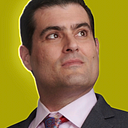Are Science and Religion at War?
Recently, I had a thought-provoking conversation with Aisha Ha Torah Yeshiva’s Rabbi Adam Jacobs about the relationship between science and religion. This discussion highlighted the complexities of this intersection and the importance of understanding rather than convincing.
Firstly, it’s essential to recognize that direct conversations are unlikely to change someone’s religious beliefs or scientific perspective. Instead, we should approach these discussions with an open mind, aiming for mutual understanding. One common misconception is assuming a direct connection between religion and science. However, these domains operate within different frameworks, making it unlikely that a scientist would be convinced by religious texts.
I shared an insight: the cosmological statements in religious texts serve a different purpose. Rather than providing scientific evidence, they help us understand the teachings and intentions of the texts at the time they were written. The fact that they are relevant some 3000 years later is remarkable but not necessarily dispositive about their divine origins.
My journey to religious observance was unique. Growing up, religion wasn’t a significant part of my life. It wasn’t until my mother remarried that my practice of religion began, initially with Catholicism, including baptism and confirmation.
As an intellectually inclined person, I sought to understand religion through primary sources, expressing frustration with religious leaders who disregarded historical documents like the Dead Sea Scrolls. I questioned the provenance of certain religious documents, drawing parallels to scientific disagreements.
Over time, I began to prioritize the community aspect of religion as proof of its validity. I likened this to my experience as a pilot, where a foundational reference point, like a checklist, helps in understanding practices. I posed an interesting question: is it a mistake for Jewish people to seek a confluence between the Torah and modern science? I noted the similarity between string theory and Kabbalah’s mention of ten or eleven dimensions and how useless such comparisons are in the real world for physicists like me. That’s ok. That’s not the purpose of a document like the Kabbalah.
My early life was marked by a strong connection to Catholic rituals and practices, influenced by my adopted Irish Catholic family. I admired figures like Galileo, whose scientific discoveries and struggles with the Catholic Church highlighted the potential for science and religion to coexist.
The conversation also touched on the difficulty of proving God’s existence, akin to proving the Big Bang occurred. I criticized religious individuals who dismiss science, believing that scientific facts can strengthen faith. I argued that while scientists provide data, philosophers and theologians interpret its meaning. However, I also emphasized that theologians should not be consulted for scientific matters, such as the Big Bang, maintaining a clear distinction between science and theology.
I shared an encounter with someone who dismissed religion’s usefulness, emphasizing that being called an “expert” requires understanding. I warned against making scientifically weak claims to impress others, as this can alienate scientifically literate individuals.
It was fun chatting with a Rabbi as erudite as Adam Jacobs. My conversation about the intersection of science and religion was eye-opening, leaving me with more questions than answers. This intersection is undoubtedly complex, but exploring it can broaden our understanding of both realms.
Have a MAGIC Week!
Brian
Appearance
I appeared live on Good morning Busan! Korea’s English morning drive radio. I discussed my second book, Think Like a Nobel Prize Winner which they call “Physicists don’t trust their brains”! Fun, but what’s up with that title?
Genius
Richard Feynman said “Science is like sex. Sometimes something useful comes out of it but that’s not the point.” Similarly, learning without action is simply entertainment. And that’s ok too.
Image
M16 and the Eagle Nebula lie about 7,000 light-years away, an easy target for binoculars or small telescopes in a nebula rich part of the summer Milky Way in the direction of the center of the galaxy.
Photo Credit: Mike Alder
Conversation
Claudia de Rham is a Swiss theoretical physicist at Imperial College London. She is known for her work at the intersection of gravity, cosmology, and particle physics.
She won the 2020 Blavatnik Young Scientist Award for reviving the theory of massive gravity and has made significant contributions to understanding dark energy, dark matter, and gravity. Her research focuses on modified theories of gravity, including massive gravity and Galileon gravity.
Join us as we explore the true nature of gravity and the beauty of falling!
My podcast is downloaded 2+ million times a year. Click here to subscribe!
